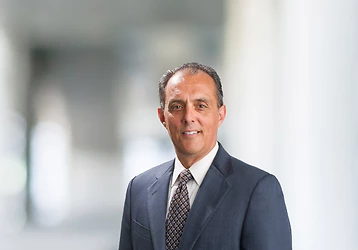Trade Secret Theft Makes Strange Bedfellows: Tesla seeks Apple's Assistance in its Pursuit of Trade Secret Theft Claims Against its Former Engineer
Earlier this year, Tesla, Inc. sued its former employee Quangzhi Cao in federal court in the Northern District of California for trade secret misappropriation. Click Here. Tesla sued Mr. Cao to recover trade secrets related to its driverless vehicle technology. Tesla alleged Mr. Cao misappropriated its confidential and trade secret information. Not surprisingly, Tesla seeks to protect information it developed and was taken by Mr. Cao, who was a high-level engineer at Tesla’s Autopilot Division.
Mr. Cao unceremoniously and abruptly left his employment with Tesla on January 3, 2019. He then joined Xiaopeng Motors Technology Company Ltd. (“Xmotors”), the U.S. research arm of Guangzhou - based Xpeng, a Chinese start-up in the driverless vehicle industry. As alleged in the complaint, Mr. Cao logged into Tesla’s secured networks in the month prior to his departure, downloaded proprietary information (including source code for Tesla’s Autopilot technology) and deleted more than 120,000 files from his Tesla-owned computer. He subsequently cleared his browser history on January 4, 2019, his last day at Tesla. He was not directed to do so by Tesla or any of its IT personnel. Tesla alleges that it discovered these actions in February 2019 as a result of its investigation. Tesla also alleged that Mr. Cao did not disclose to Tesla that he had copied thousands of Tesla’s files, including numerous autopilot trade secrets, to his iCloud account. None of these records were returned when he left the company as required by his nondisclosure agreement with Tesla.
In discovery, Tesla subpoenaed records from its competitor in the driverless technology field, Apple, Inc. Apparently, Apple had a similar problem with defecting engineers who went to work for Xmotors/Xpeng. Apple had pursued a claim against a former engineer that went to the same start-up last year.
What can we learn from Tesla and Apple’s recent experiences in the trade secret theft arena? The obvious point is that you should be diligent in your efforts to protect your proprietary, trade secret and confidential information. Have policies, practices and tools in place (including confidentiality and appropriately tailored restrictive agreements) to protect your information. Furthermore, be sure to act in enforcing and periodically reviewing the effectiveness of those tools. Make sure they are doing what is expected of them – actually protecting your information. If there’s a leak, plug it. If an employee moves on to a competitor you should be vigilant in following up on their contractual and other obligations to return your intellectual property and trade secrets. Review their internal data histories prior to departure. Those histories can be, and often are, very telling in predicting an employee’s post-departure behavior. Failing to do so not only jeopardizes a competitor landing with that information, but creates the very real risk that a court might find that you waived your right to enforce a departing employee’s obligations, be they contractual or statutory. Do not sit on your hands. You can bet that Tesla and Apple do not sit idly by.
Tesla and Apple, though they are competitors in the same industry, share a common interest in that they want to protect their respective trade secrets, confidential and proprietary information related to researching, developing and producing driverless vehicles. Though they may be strange bedfellows in this particular instance, they share a common interest in protecting their information. Regardless of the industry, you should be prepared to protect your information. Protect your trade secrets by enforcing your rights and be vigilant about monitoring those procedures and practices you have in place. Even one small misstep or delay in pursing and protecting your information can be fatal.
Phillip C. Korovesis
313.983.7458
korovesis@butzel.com












